Eduard 1/48 Fw-190D-11 off the Shelf of Doom
After building the Fw-190D-13 half of this Profipack Double Kit, I set it aside for what must be around 5 years (before the move to the present address). These Dora-9 kits are a lot better than the early Antons. With luck the Dora will be also upgraded by Eduard.
The Fw-190D-11 was to have been the next production version of the Langnasen-Dora, after the Dora-9. Seventeen of these aircraft were listed in the Oberkommando der Luftwaffe Generalquartiermeister reports as being delivered in the late winter and early spring of 1945, and at least two of them flew operationally. 820 Dora-11s were to be produced at the Focke-Wulf Sorau factory, commencing in January 1945.
The Dora-11 differed from its predecessor in choice of engine and armament. Power was provided by the Junkers Jumo 213E, which was rated at 2,000 h.p., a considerable advance from the Dora-9's 213A at 1,770 h.p. The 13mm fuselage guns were dropped, while two 30mm MK108 weapons were installed in the outer wings to complement the 20mm MG151s in the inboard positions.
Of the 17 Dora-11s delivered, three can be accounted for. One, the best-known, was Rot 4 of JV44's Platzshutz unit, known as the Papageistaffel for its radio call sign, Papagei, or "Parrot." Another, "white chevron," was foundat Muenchen-Reim, and may have served with JV44 after serving at the Verbandsfuehrerschule General der Jagdflieger (Training School for Unit Leaders) at Bad Woerishofen; it is not known if it was actually used operationally. A third, "white <61," was also found after the war at the Verbandsfuehrerschule General der Jagdflieger.
The primary visual difference between the D-11 and the D-9 is the flat forward weaponless cowl of the D-11, a larger Ta-152 propeller and supercharger intake to deal with the increased power, and a widening of the cowling to take the Jumo 213E engine.
The Papageistaffel and the Galland Zircus:
After his dismissal as General der Jagdflieger by Hermann Goering at the end of December, 1944, Adolf Galland was slated to become Staffelkapitaen of 4.JG54 - at the time fighting overwhelming odds in the Courland Peninsula - as his punishment. For a Generalleutnant to be a staffelkapitaen would have been as great a dismissal as Goering could achieve; had Galland refused, it would have been dereliction of duty in the face of the enemy, and Goering would have been within his rights to stand his greatest critic against a wall and have him shot. Fortunately for Galland, Hitler knew none of this when he suggested to the Reichsmarschall that the obstreperous Galland be given command of a Jagdstaffel of Me-262s to demonstrate what he said the airplane was capable of against the Allied air forces. Thus was born Jagdverband 44, literally "Fighting Band," with the 44 being some inner joke of Galland's regarding both his original command, 3.J/88, and his criticism of Goering. The unit was also known as Galland's Zirkus (circus).
Much has been written about Galland's unit, which was embroiled in controversy during its entire two month existence. By early April, 1945, Galland had nearly 50 Me-262s, which had come to him from the factory, and from other units as they fell apart. During the first week in April, Galland moved the unit to Munchen-Reim airport, where it would be near the main Messerschmitt factory responsible for final assembly of Me-262s, thus assuring him a supply of aircraft. The move also put JV44 squarely in the bulls-eye of the 9th Air Force, which was supporting the 7th Army in its drive to clear the German Army out of Bavaria. Once the jets were spotted, the field was under constant surveillance by P-47s and P-51s of the 9th AF fighter-bomber units, as well as the Tempests of the RAF's 2nd Tactical Air Force.
Other jet units had been protected by conventional fighter units nearby, whose Bf-109s and Fw-190D-9s could provide protection to the Me-262s when they were at their most vulnerable: during takeoff and landing. JV44 needed their own Platzshutzstaffell (Airfield Protection Squadron), and formed it in mid-April. The unit has come to be known as the Papageistaffel, but this name was not used at the time, although the flight call sign Papagei (Parrot), may have been. Nicknamed the Wurgerstaffel, the three Fw-190D-9s and one Fw-190D-11 (there may have been others, these are known for certain photographically) were commanded by Leutnant Heinz Sachsenberg. son of the World War I Marineflieger ace. That Sachsenberg had a sense of humor is demonstrated in the slogans on the four airplanes: his airplane, Fw-190D-9 Rot Ein, carried the slogan "Verkaaft's mei Gwand 'I foahr in Himmel" ("Sell my clothes, I'm going to heaven!"); Fw-190D-9 Rot Drei carried "Im Auftrage der Reichsbahn,"("By Order of the State Railway," a reference to the manner by which a shot-down German pilot could return to his unit via the railroad); Fw-190D-11, Rot Vier - whose pilot is unknown - carried "Der nachste Herr, die selbe Dame!" ("The next man, the same woman!"), while Oberleutnant Klaus Faber's Rot Dreizehn carried "Rein muss er und wenn wir beide weinen!" ("In he goes and then we both cry!") The double-entendre can still bring a smile to one - whether you understand idiomatic German or not - sixty-odd years later.
So far as is known, in the two weeks of combat left for JV44, the Papageistaffel did not score any victories over Allied aircraft. The unit has become of primary interest to modelers since the discovery of the first photographs of Rot 13 in the late 1980s showed the wild markings of the flight: the underside painted completely in Rot23 red, with white stripes, the intention being to convince the light flak gunners defending the field that these airplanes were friendly at a glance, as they flew through the flak in pursuit of any attacking Thunderbolt or Mustang.
THE KIT
Eduard released a “double combo” Profipack kit of the Fw-190D-11 and Fw-190D-13 back in 2010. This is one of the “open it up” Fw-190 kits Eduard first released. The kits are both accurate with the different changes to the fuselage resulting from the different engines used, making them the only fully-accurate injection kits of these sub-types (Hobby Boss also released kits of these sub-types, but missed the changes in the fuselage cowling). Both kits provide the rear part of the engine, which can be seen through the open wheel well.
Markings are provided for the three Fw-190D-11's (which may all be the same airplane at various times) in the markings for the three units they (it) was photographed with, the most colorful being with the “Papagei Staffel.”
CONSTRUCTION
The one area of this kit that is still as fiddly as the Anton kits is the upper wing and the cover for the inboard cannon. It's really designed to work posed open. I wanted to close it and found that the only way I could get it to look right was to sand down the cannon cover till it could be glued to the wing and fit the opening right.The wing with that cover one would only really fit to the fuselage if each upper wing part was attached individually to the separate fuselage half so that the upper part of the gun cover could be pressed into position correctly, before further assembly of the model.
I then followed instructions and painted and assembled the cockpit and the engine bay and wheel wells, then glued those sub-assemblies, then glued the fuselage halves together, then glued the lower wing to the fuselage and then to the upper wing parts. This way, fit was good enough I didn't use filler on the model, only smoothing out any excess glue once it has set. I then carefully attached the upper fuselage gun cover and attached the elevators and the radiator assembly with cowling.
While the previous paragraphs sound simple, the kit is very fiddly and it took a lot of effort to get parts to fit right before applying glue. Be sure you have things in the right position with the right fit before making it permanent.
COLORS & MARKINGS
I painted the lower surfaces Tamiya Gloss White, then masked off the stripes with Tamiya tape. Since these were done “in the field” on the original, with the airplane on its gear, I deliberately didn't get the stripes aligned with each other and properly spaced, merely approximately, as would likely have been the case on the original. I then applied Tamiya Gloss Red.
When this was dry, I masked off the lower surface and applied the upper surface camouflage, using “mixes” of Tamiya paints for RLM 81, 82 and 76. The kit decals were used without problem, going down under a coat of Micro-Sol.
I unmasked the lower surfaces and applied an overall coat of clear flat, then unmasked the canopy and attached it in the open position. The landing gear and prop were then attached. I didn't apply a lot of weathering because these airplanes didn't get a lot of use in the few weeks they were with JV-44.
CONCLUSIONS
Another one off the Shelf of Doom. I really hope that Eduard proceeds to re-do their “Langnasen Dora” kits the way they have done the Anton series, creating some “buildable” kits. While fiddly, this kit is not as fiddly as the early Anton kits were, and makes up into the only fully accurate Fw-190D-11 model out there. Recommended for Wurger fans.
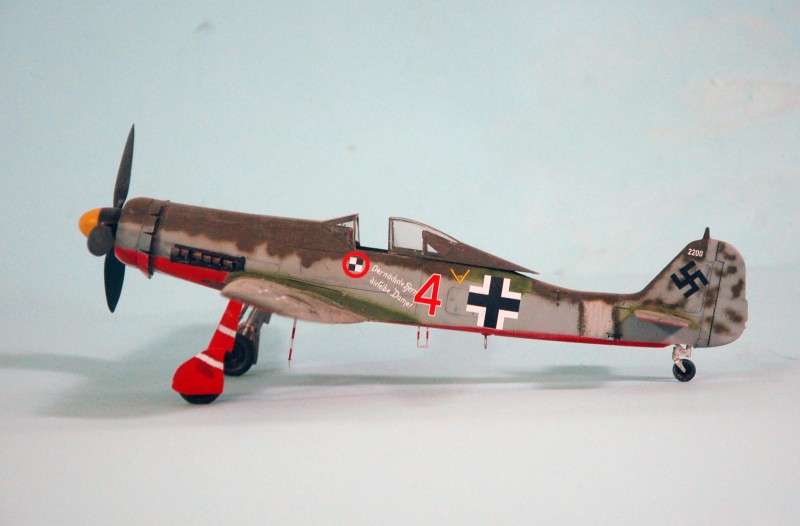

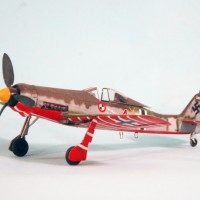

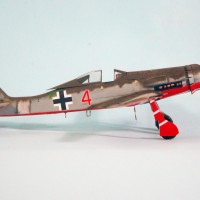
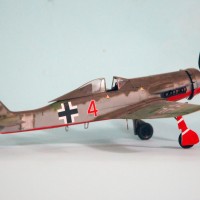
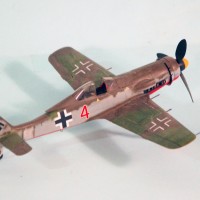
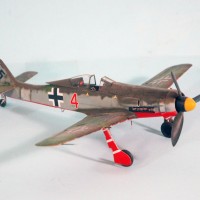
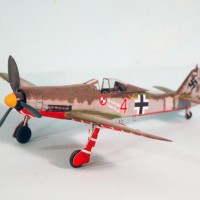
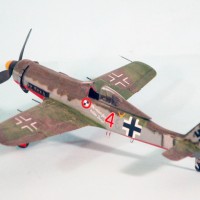
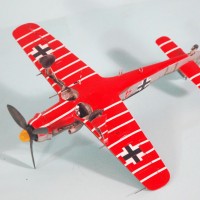
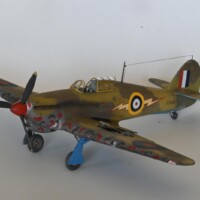
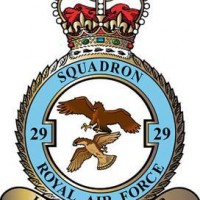
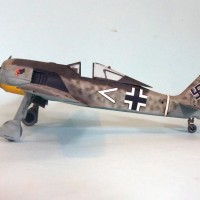
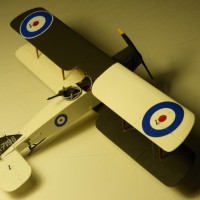
I knew that was yours before I even scrolled down from the pic. Nice job.
Great paint scheme and history on this Dora, Tom. Thanks for sharing!
Terrific job on the FW-190 D-11, done in JV 44 markings. The kit is great, but your paint work really makes the build special. And, as always, your very descriptive narrative is outstanding, informative, and appreciated.
Nicely done!
Great looking D-11. I really like the JV 44 planes!
Really nice build. I don't blame you for leaving this on the shelf of doom for a while. That wing assembly can be quite frustrating.
These JV 44 planes are a combination of my favorite Luftwaffe subjects and Late War colors. I have two of the older Pro Modeler JV -44 Long nose Dora kits that were originally marketed by Tri Master. You're really tempting me to take another look at them. Yours looks good Tom... it would look even better parked next to a JV-44 Me-262 !
I especially enjoyed the read.
If accuracy matters, those kits are obsolete. If no one you know who will ever look at them knows anything about the topic, then all is well. 🙂
Nice work Tom. I have a Weekend Edition D-9 and haven’t built it because the landing gear attachments appear non existent. One of these days...
First, glue the actuators in position - they only fit one way. Then attach the gear doors to the gear legs and then attach the gear legs, attaching the actuators in their proper position to the gear, and - voila! - it's in the right position. Yes, this had me flummoxed for a long time, till I did the gear in the new kits. Trust me, it works.
Thanks!
that's beautiful...reminds me of the "Red Baron"...can't imagine you having a shelf of doom but if they languish too long burnout sets in
"if they languish too long burnout sets in"
Indeed. Hey, beyond the fact I figured a way to combine writing with a modicum of competence in assembling little plastic toys to be a reviewer, and a Hollywood ability to ask for what I want from people, I'm just another muddler. 🙂
and a pretty great sense of humour
nice build and that is one attractive scheme. love your (as usual) great write up as well. always enjoy your articles - thank you!
Very nice. Those red under-bellies always seem so garish to me, but suspect they served their purpose well! Nicely done and painted.
I like everything about this one Tom, including the write-up of the build & history.
I also appreciate your comments about the undercarriage attachment for when I eventually get around to building mine.
I need to add a JV44 190 to my growing FW fleet, such a striking scheme. Lovely work of a great machine.
Thanks! Get the Eagle Editions decals for the airplanes - Jerry Crandall knows more about them than anyone and the sheet is perfect.